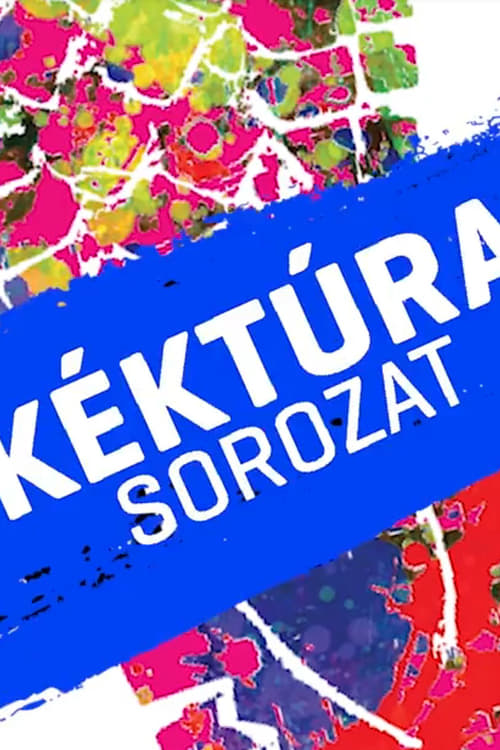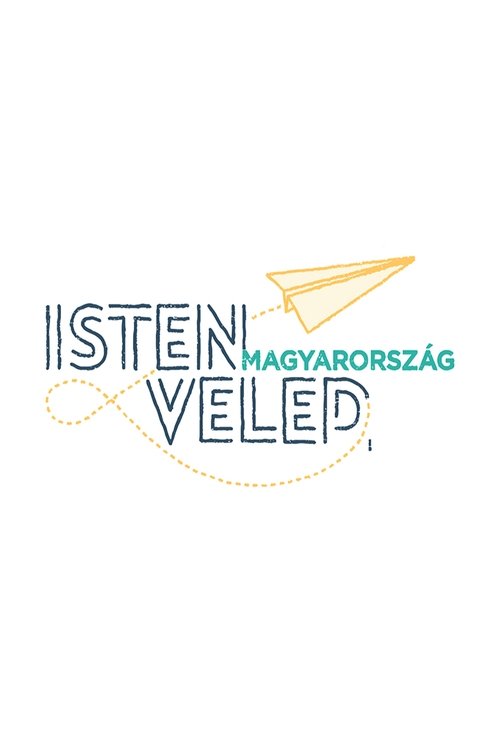
Ask Your Own Question
What is the plot?
In "Episode 2" of "Taboos Without Taboos," the episode opens with a stark visual of a bustling urban environment, where the camera pans through a crowded marketplace. The vibrant colors of the stalls contrast with the somber expressions of the people, hinting at underlying tensions. The narrator introduces the theme of societal taboos, setting the stage for the exploration of a controversial topic: mental health stigma.
The first major scene features a young woman named Clara, who is seen sitting alone on a park bench, visibly distressed. Her internal struggle is palpable as she fidgets with her hands, glancing around nervously. The audience learns that Clara has been battling depression but feels unable to discuss her feelings with friends or family due to fear of judgment. This moment establishes her emotional state and the weight of societal expectations on her.
Transitioning to a support group meeting, the camera captures a diverse group of individuals sharing their experiences with mental health. Clara hesitantly enters the room, her body language revealing her apprehension. As she listens to others speak openly about their struggles, a flicker of hope ignites within her. The facilitator encourages participants to share their stories, and Clara, after a moment of internal conflict, decides to speak up. Her voice trembles as she recounts her feelings of isolation, and the group responds with empathy, creating a sense of community.
The narrative shifts to Clara's home life, where her interactions with her family are strained. Her mother, who embodies traditional values, dismisses Clara's feelings, insisting that she should "just get over it." This confrontation escalates, showcasing Clara's frustration and the emotional distance between them. The scene is charged with tension, highlighting the generational divide in understanding mental health.
In a pivotal moment, Clara meets with a childhood friend, Jake, who has also faced mental health challenges. Their conversation is raw and honest, revealing Jake's own battles with anxiety. This exchange serves as a turning point for Clara, as she realizes she is not alone in her struggles. The warmth of their friendship contrasts sharply with her family dynamics, providing her with a sense of belonging.
The episode then delves into the stigma surrounding mental health in the workplace. Clara attends a job interview, where she is confronted with subtle biases when the interviewer makes dismissive comments about mental health. Clara's internal conflict resurfaces as she grapples with the fear of being labeled as "unstable." The scene is tense, and the audience can feel her anxiety as she navigates the interview, ultimately deciding to conceal her struggles to secure the job.
As the episode progresses, Clara's emotional state deteriorates. She experiences a panic attack while at work, leading to a dramatic scene where her colleagues react with confusion and concern. The camera captures her overwhelming sense of helplessness, and the moment serves as a stark reminder of the challenges faced by those with mental health issues in a society that often stigmatizes them.
In the climax of the episode, Clara attends another support group meeting, where she witnesses a powerful moment of vulnerability from another member who shares a story of recovery. Inspired, Clara finally finds the courage to share her own story in its entirety, breaking down in tears as she speaks about her struggles and the impact of stigma on her life. The group rallies around her, offering support and understanding, creating a cathartic moment that emphasizes the importance of community.
The episode concludes with Clara walking through the park again, this time with a sense of determination. The camera captures her newfound resolve as she reflects on her journey. The final shot lingers on her face, a mixture of hope and uncertainty, as she contemplates the road ahead in her battle against mental health stigma.
Related Titles
Browse All Titles →
What is the ending?
In the ending of "Taboos Without Taboos," Season 1, Episode 2, the characters confront their personal struggles and societal expectations. The episode culminates in a tense discussion that forces them to face their fears and desires. Ultimately, they reach a resolution that allows them to embrace their identities, albeit with lingering doubts about the future.
As the episode draws to a close, we find ourselves in a dimly lit room where the main characters gather for a final confrontation. The atmosphere is thick with tension, each character grappling with their own internal conflicts.
Scene 1: The Gathering The camera pans across the room, capturing the anxious expressions of the characters. They sit in a circle, the weight of unspoken words hanging heavily in the air. Each character's body language reveals their emotional state--some fidget nervously, while others stare blankly at the floor, lost in thought. The leader of the group, visibly shaken, takes a deep breath and initiates the discussion, urging everyone to share their truths.
Scene 2: The Confessions One by one, the characters begin to open up. The first, a young woman named Sarah, reveals her struggle with societal expectations regarding her career. Her voice trembles as she speaks, and tears well up in her eyes. The camera zooms in on her face, capturing the vulnerability and fear of judgment. The others listen intently, their expressions shifting from skepticism to empathy.
Scene 3: The Turning Point As the confessions continue, the atmosphere shifts. A middle-aged man, Mark, shares his own battle with addiction, his voice cracking as he recounts the pain it has caused him and his family. The room grows silent, the gravity of his words resonating deeply with the others. The camera captures the reactions of the group, some nodding in understanding, while others look away, grappling with their own discomfort.
Scene 4: The Climax The discussion reaches a climax when a character named Lisa, who has been quiet until now, stands up abruptly. Her face is flushed with emotion as she challenges the group to confront their fears head-on. She passionately argues that they must not only accept their truths but also support one another in their journeys. The intensity of her words ignites a spark in the room, and the characters begin to rally around her, their shared struggles creating a sense of unity.
Scene 5: The Resolution As the episode nears its conclusion, the characters come to a collective understanding. They agree to form a support group, vowing to help each other navigate their challenges. The camera captures their relieved smiles, a stark contrast to the tension that filled the room moments before. Each character expresses a sense of hope, albeit tinged with uncertainty about the future.
Scene 6: The Farewell In the final moments, the characters exchange heartfelt goodbyes, promising to meet again. The camera lingers on their faces, capturing the mix of emotions--hope, fear, and determination. As they leave the room, the leader looks back, a sense of resolve washing over him. The screen fades to black, leaving the audience with a lingering sense of possibility.
In summary, the episode concludes with the characters embracing their identities and committing to support one another, setting the stage for their continued journeys. Each character's fate is intertwined with the others, highlighting the importance of community in overcoming personal struggles.
Is there a post-credit scene?
In "Episode 2" of "Taboos Without Taboos," there is no post-credit scene. The episode concludes without any additional content after the credits roll, focusing instead on the themes and discussions presented throughout the episode. The narrative wraps up with a strong emphasis on the taboo topics explored, leaving viewers to reflect on the insights shared during the episode.
What specific taboo is explored in Episode 2 of Taboos Without Taboos?
In Episode 2, the show delves into the taboo surrounding mental health, particularly focusing on the stigma associated with seeking help and the societal pressures that prevent individuals from discussing their struggles openly.
Which character's backstory is revealed in this episode, and how does it impact their current situation?
The episode reveals the backstory of Sarah, a young woman who has battled depression for years. Her experiences with isolation and misunderstanding from her peers shape her current reluctance to seek help, highlighting her internal conflict and emotional turmoil.
How do the interactions between Sarah and her family illustrate the episode's central theme?
Sarah's interactions with her family are fraught with tension; her parents dismiss her feelings, believing she should 'just get over it.' This dynamic illustrates the lack of understanding and support that often accompanies mental health issues, deepening Sarah's sense of isolation.
What pivotal moment occurs that challenges Sarah's perception of her mental health?
A pivotal moment occurs when Sarah attends a support group meeting, where she hears others share their experiences. This moment challenges her perception, as she realizes she is not alone in her struggles, igniting a flicker of hope and the desire to confront her issues.
How does the episode depict the societal reactions to mental health discussions?
The episode depicts societal reactions through various characters who express discomfort or disbelief when mental health is mentioned. This is illustrated in a scene where Sarah's friend laughs off her concerns, showcasing the pervasive stigma and the barriers it creates for those seeking help.
Is this family friendly?
"Taboos Without Taboos," season 1, episode 2, delves into sensitive and potentially controversial topics that may not be suitable for children or sensitive viewers. The episode explores themes that could be considered objectionable, including:
-
Mature Themes: The discussion of societal taboos may involve topics such as mental health, sexuality, and addiction, which can be complex and distressing for younger audiences.
-
Emotional Distress: Characters may experience intense emotional moments, including anxiety, depression, or conflict, which could be upsetting for sensitive viewers.
-
Graphic Imagery: There may be visual representations or discussions of distressing situations that could be unsettling.
-
Strong Language: The dialogue may include strong or explicit language that is not appropriate for children.
-
Confrontational Situations: Scenes may involve confrontations or conflicts that could be intense or uncomfortable to watch.
These elements contribute to the overall tone of the episode, making it more suitable for mature audiences.


















